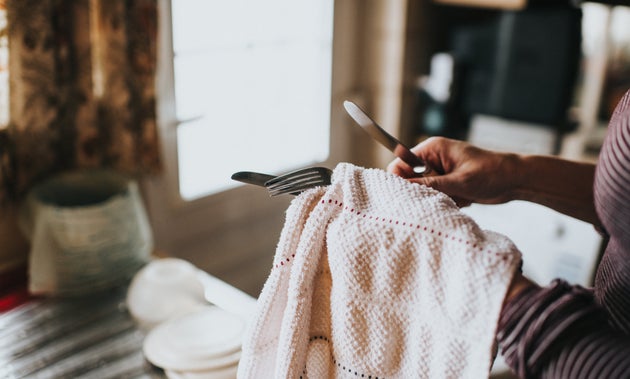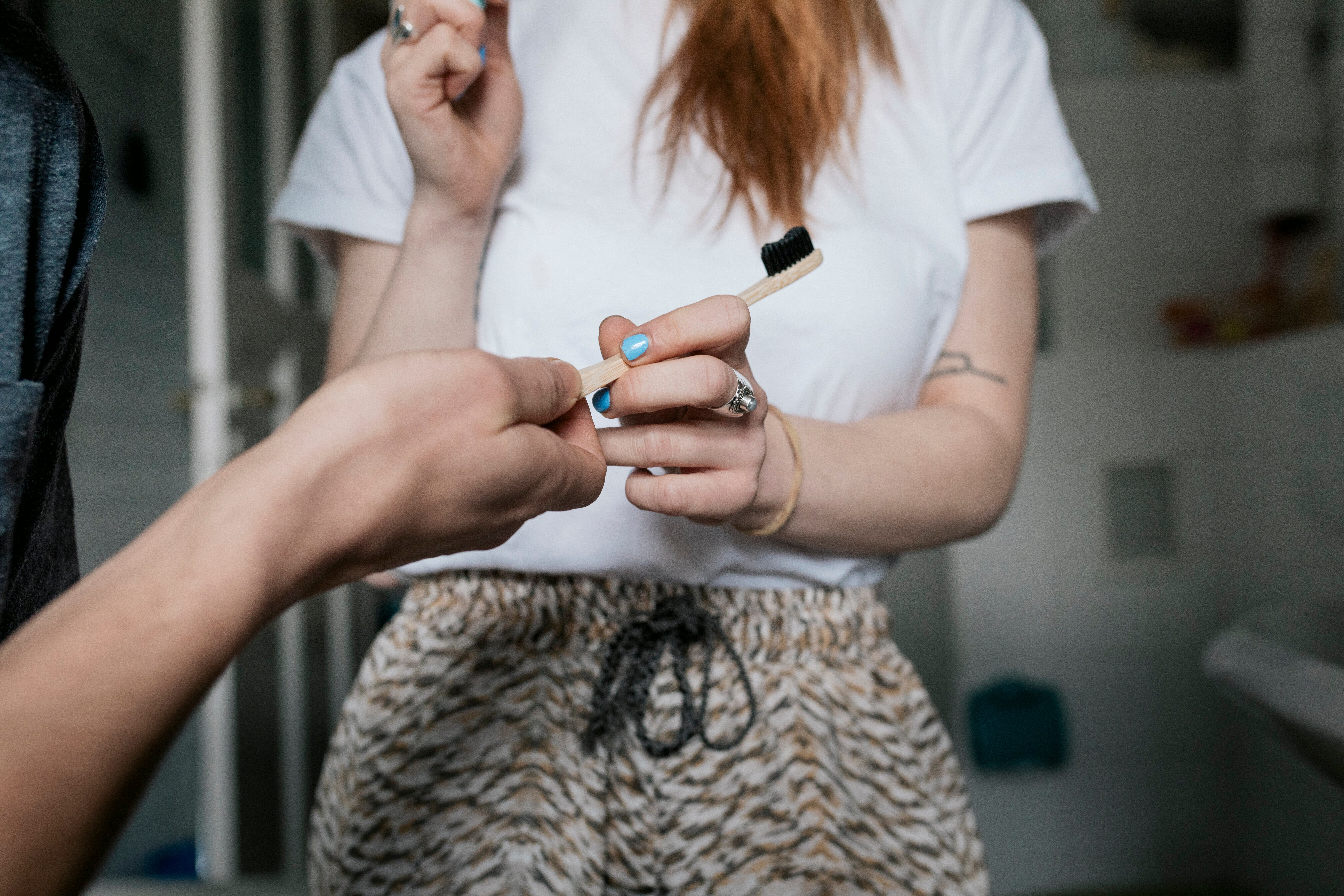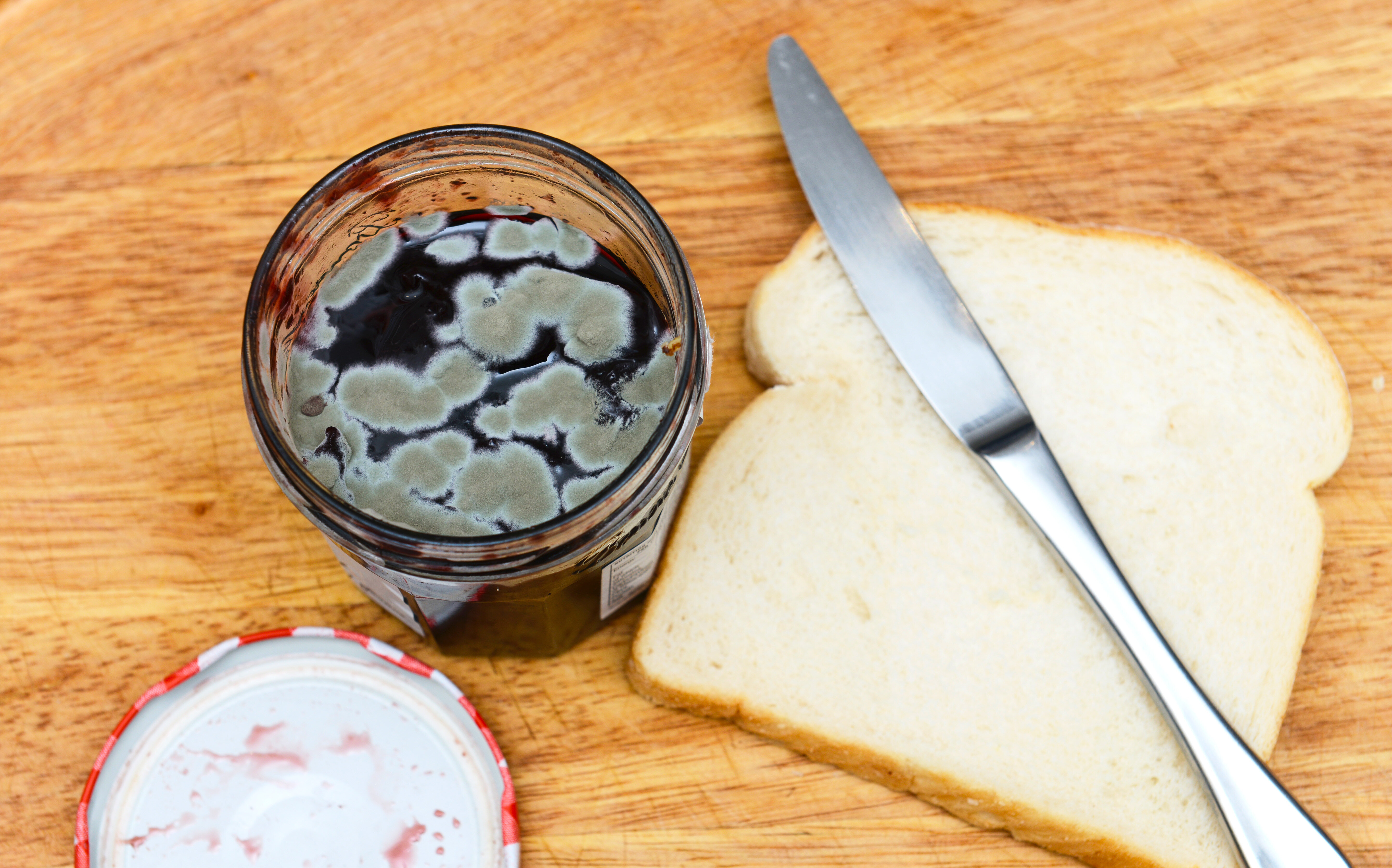 Put down that dish towel!
Put down that dish towel!Imagine if you visited a restaurant and saw the chef cooking barefoot or liberally taking advantage of the 10-second rule ― you’d walk out, right?
Yes, restaurants should be held to a higher standard than you are at home. After all, way more people are filtering in and out, making potential exposure to food-related sickness way higher.
But it’s almost a cruel joke when you get food poisoning from your own cooking. And food safety aside, some restaurant rules can make kitchens cleaner and more efficient, which is pretty darn appealing. Simply put, there are some ways you can benefit from being a bit more buttoned up in your own kitchen, and food safety experts told HuffPost that it starts with ditching these eight common habits.
1. Fitting Food In The Fridge Wherever There’s Room
Many people stick food in the refrigerator wherever there’s space, without giving it much thought. But Ellen Shumaker, who has a Ph.D. in food science and directs outreach for North Carolina State University’s community food safety program, said that restaurants must follow strict rules about where to place items in the fridge to avoid cross-contamination. For example, she said raw foods could contain pathogens that make people sick, so it’s important that they not come into contact with ready-to-eat foods.
Want to stock your fridge so it could earn a food safety inspector’s stamp of approval? Shumaker said to store raw foods below ready-to-eat options in case the packages leak.
“For example, keep raw chicken and meat on the bottom shelf of your fridge, while keeping vegetables and other foods you consume fresh on the top shelf,” she said. Shumaker added that it’s important to use appropriate lids and containers, and to clean your fridge regularly to prevent dirt or moisture buildup, which could also lead to contaminated food.
2. Putting Newer Items At The Front Of The Pantry Or Fridge And Older Ones At The Back
If you were to peek inside your pantry right now, what would be at the very front? Your favourite bag of chips? The oatmeal you grab every morning when making breakfast? Though it might make the most organisational sense to put your go-to items right up front, Martin Bucknavage, a senior food safety extension associate at Pennsylvania State University’s Department of Food Science, said restaurants use a method called “first in, first out.”
“We want to use the oldest product first, based upon the stated shelf life,” he said. This, he explained, makes sure everything gets used and prevents expired food from hanging out in the pantry, completely forgotten about in the back.
 Don't even think about tasting that and dipping it back in the pot.
Don't even think about tasting that and dipping it back in the pot.3. Dipping Your Spatula Into Food You’re Preparing For A Little Taste
When you’re cooking at home, part of the fun is tasting as you go — and it can be the key to making sure you have the right balance of spices. Both Bucknavage and Shumaker said that taste testing is allowed in restaurant kitchens, but there are strict rules for how to go about doing it.
“Because people can carry pathogens such as Staphylococcus aureus, this is an easy way to introduce bacteria into a food,” Shumaker said. “Tasting can be done, but needs to be done in a way that the taster is not contaminating the dish.”
For example, food should not be tasted over preparation or serving containers, and tasting utensils should be single-use. The safe way to test food, according to Shumaker, is to use a disposable utensil or a plate to take a sample from a dish and then to step away from other food as you taste it.
4. Thawing Meat Or Fish On The Counter
Cooking meat or fish for dinner requires some forward thinking. You’ve probably never given a second thought to pulling something out of the freezer and leaving it on the counter to thaw while you go to work or run errands. But Bucknavage said that would never happen at a restaurant.
“This can lead to temperature abuse of the food. And with raw meats and fish, this can lead to spoilage of the product and growth of bacterial pathogens if present,” he said.
Instead, he said that restaurant workers would do a controlled thaw, with adequate temperatures maintained throughout the process and monitored with a thermometer.
“A general rule is that foods should not be above 41 degrees Fahrenheit, or below 135 [for maintaining hot foods], for longer than four hours,” Shumaker said.
Here’s HuffPost’s full guide on safely defrosting meat.
5. Not Properly Regulating Temperatures
Speaking of temperatures, both food safety experts who spoke to HuffPost said not enough people use one key tool at home: a food thermometer. Follow the Department of Agriculture’s guide to internal temperatures for every kind of meat to help cut down on foodborne illnesses.
Shumaker and Bucknavage said that making sure your refrigerator is the right temperature is important, too. The USDA says refrigerators should be set at 40 degrees or below.
6. Stacking Wet Cutting Boards After Washing Them
If you keep your cutting boards on top of each other in a cabinet, you’re committing a food safety sin. Bucknavage said that, in restaurant kitchens, cutting boards are stored upright and never stacked.
“This is to ensure proper drainage. If stored on top of each other, moisture will be captured, which can result in mould growth,” he said.
7. Drying Utensils With A Dish Towel
Anyone who’s ever worked in a restaurant kitchen knows that when a food safety inspector shows up, you must immediately hide all the dish towels, and especially make sure to remove them from countertops. That’s because they can be a breeding ground for bacteria.
“Drying with a dish towel could potentially recontaminate utensils in the event that the towel is contaminated,” Shumaker said. She said such implements should be air-dried instead.
8. Letting Your Pet Hang Out With You While You Cook
This one might be obvious, but animals aren’t allowed in restaurant kitchens because they could contaminate areas with their hair, drool and other secretions. Both cats and dogs carry germs that can cause foodborne illness. If you are going to allow your pet in the kitchen, at least wash your hands between giving them some love and prepping your meal.
By putting this and the seven other habits to bed, you’re making your kitchen a pretty clean place to cook and eat — even if you do follow the 10-second rule every now and then.




